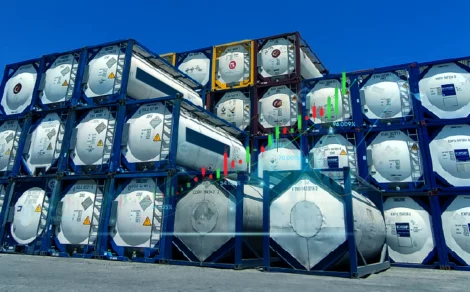US President Donald Trump on 13 February imposed the ‘reciprocal tariffs‘ on US trading partners, citing the need to correct trade imbalances. He emphasised that during his first term, he raised concerns about high import tariffs but could not secure any concessions.
Trump also pointed out that while the US advocates free trade, its trading partners frequently obstruct American exports. According to him, the introduction of reciprocal tariffs will correct this imbalance and ensure fairer trade practices.
Continue reading this article to have a comprehensive understanding of what reciprocal tariff is, the goal of the imposition, and its effect on India.
What is a Reciprocal Tariff?
A normal tariff is a tax that governments of a particular country impose on imported goods from another country. Whereas, the reciprocal tariff would essentially mirror the tariffs imposed by other countries on US products, applying the same rate to their goods entering the US, thereby levelling the playing field.
The US intends to apply these tariffs universally, regardless of whether the country is a strategic competitor like China or a close ally.
These reciprocal tariffs would involve rate hikes on imports, designed to match the tariffs other countries impose on US exports. Experts predict that this could increase the average US tariff rate by approximately 2 percentage points.
What is the Goal of Reciprocal Tariff?
One of the primary goals behind introducing reciprocal tariffs is to establish parity with other countries on their tariff rates. This means that whatever other countries charge from the US, the US will charge the same from them.
Trump emphasised that the initiative serves both geopolitical and economic interests all over the world, particularly concerning trade relations with markets like India and the European Union (EU). The EU will also face some risks due to this tariff. The EU imposes an average tariff rate of 5%, which is high compared to the US’ 2.5% rate on European vehicles.
This plan will also involve current geopolitical priorities with Ukraine. It may find a resolution for the situation in Ukraine. It will also increase US exports to key sectors of Ukraine such as Liquefied Natural Gas (LNG).
In addition to reciprocal tariffs, Trump reiterated his intention to impose import taxes on specific products such as cars, pharmaceuticals, and semiconductors—“over and above” the tariffs on other goods. This directive from Trump instructed the US Commerce Secretary and the US Trade Representative to review these trade issues and recommend appropriate measures.
The expected enforcement of these tariffs will be in April 2025. The tariffs could be imposed under national security concerns, emergency economic powers, and due to unfair trade practices.
What are the Complications of Reciprocal Tariffs?
Experts remain uncertain whether President Donald Trump views reciprocal tariffs as a replacement for the universal 10% to 20% tariff he proposed during his campaign. Goldman Sachs has cautioned that using “reciprocal tariffs” to address non-tariff issues could be risky. Additionally, Trump might factor in value-added taxes (VATs) when determining tariff adjustments, adding further complexity to the policy.
Will Reciprocal Tariffs Impact India?
Trump’s decision could have significant consequences for India, as he has repeatedly criticised India’s high tariffs. He stated, “India has more tariffs than nearly any other country.” He also mentioned his failure to secure concessions on tariff reductions with India during his first term, which has now paved the way for a reciprocal approach.
Applying average tariff rates across all products could substantially impact India, given its historically higher import taxes as compared to the US. If the US aims to reduce the trade gap, India could face tariff hikes of 4 to 6 percentage points.
The implementation of reciprocal tariffs would highlight India’s high tariff rates. For example, India currently imposes an 8.5% tariff on US imports, but some segments face significantly higher rates. The motorcycle sector, for instance, levies a 30% tariff on US imports. Under the new policy, the US would mirror these rates, potentially increasing costs for Indian exports.
Uncertainty surrounding trade policies can undermine business confidence and slow economic growth. Increased risk aversion may deter investors from the stock market, further destabilising financial markets.
Several key Indian industries could come under pressure due to reciprocal tariff hikes, including:
- Electrical equipment
- Gems and jewellery
- Industrial machinery
- Fuels
- Pharmaceuticals
- Textiles
- Automobiles
- Iron and steel
- Chemicals
Final Thoughts
The introduction of reciprocal tariffs marks a significant shift in US trade policy, particularly in its approach to India. While the move aims to create a level playing field, it also introduces economic uncertainty that could disrupt global trade dynamics. For India, the potential tariff hikes could challenge key industries, impact exports, and deter investment.
The broader implications extend beyond just tariffs—uncertainty in trade policies can weaken business confidence, affect stock markets, and slow economic growth.
As both nations navigate this new trade landscape, the effectiveness of reciprocal tariffs will depend on how they balance economic interests with diplomatic relations. Whether this strategy fosters fairer trade or triggers new tensions remains to be seen.
Get regular financial insights from Torus Digital and take the next step toward achieving your goals!





